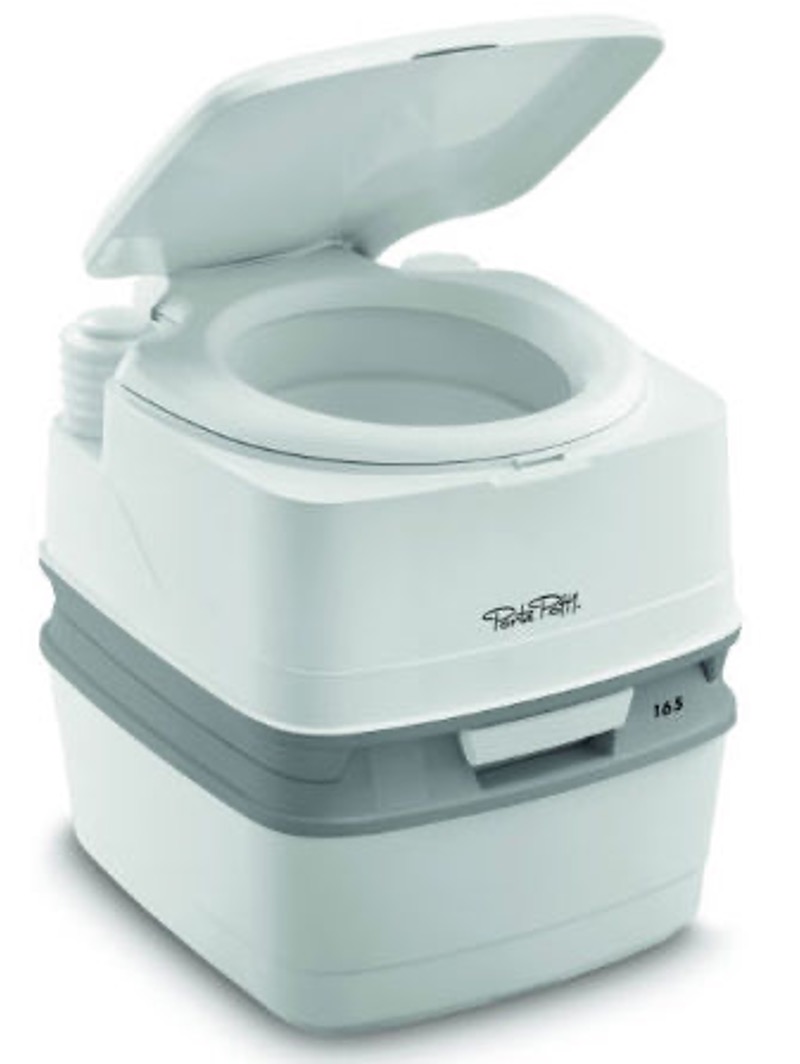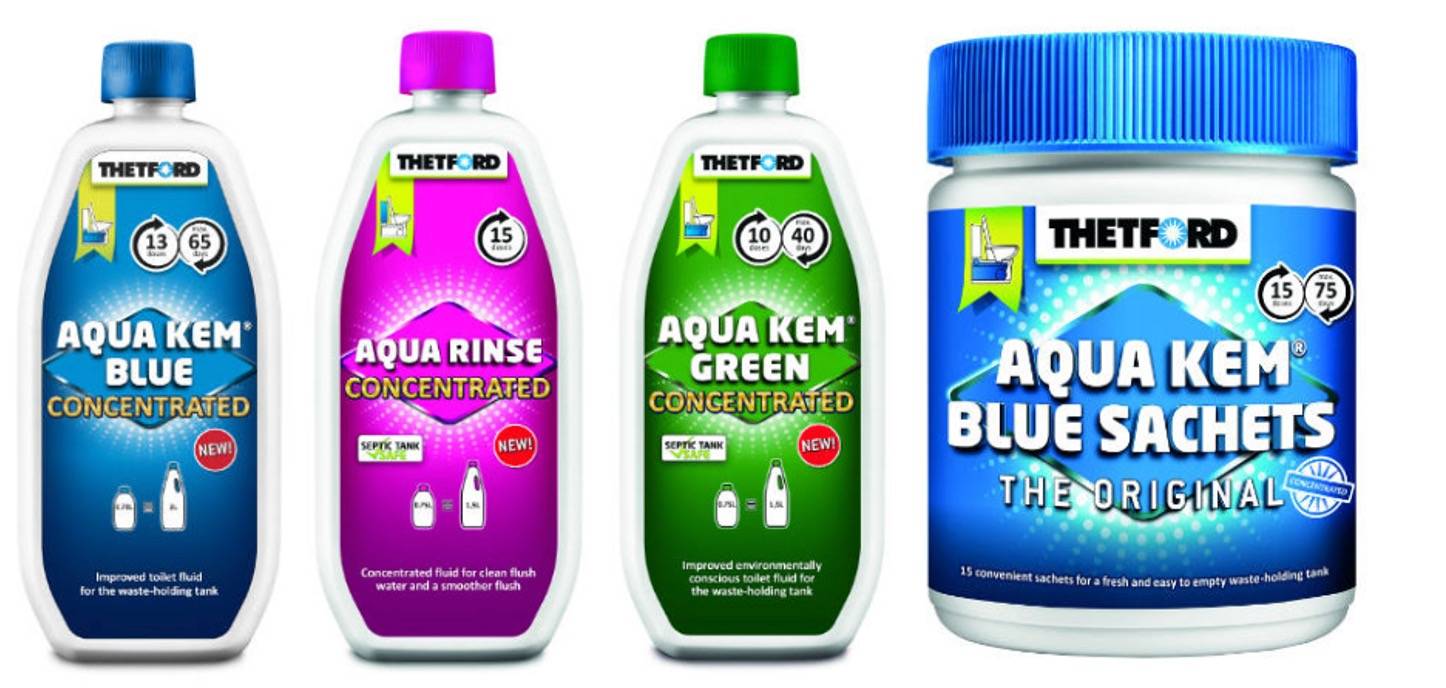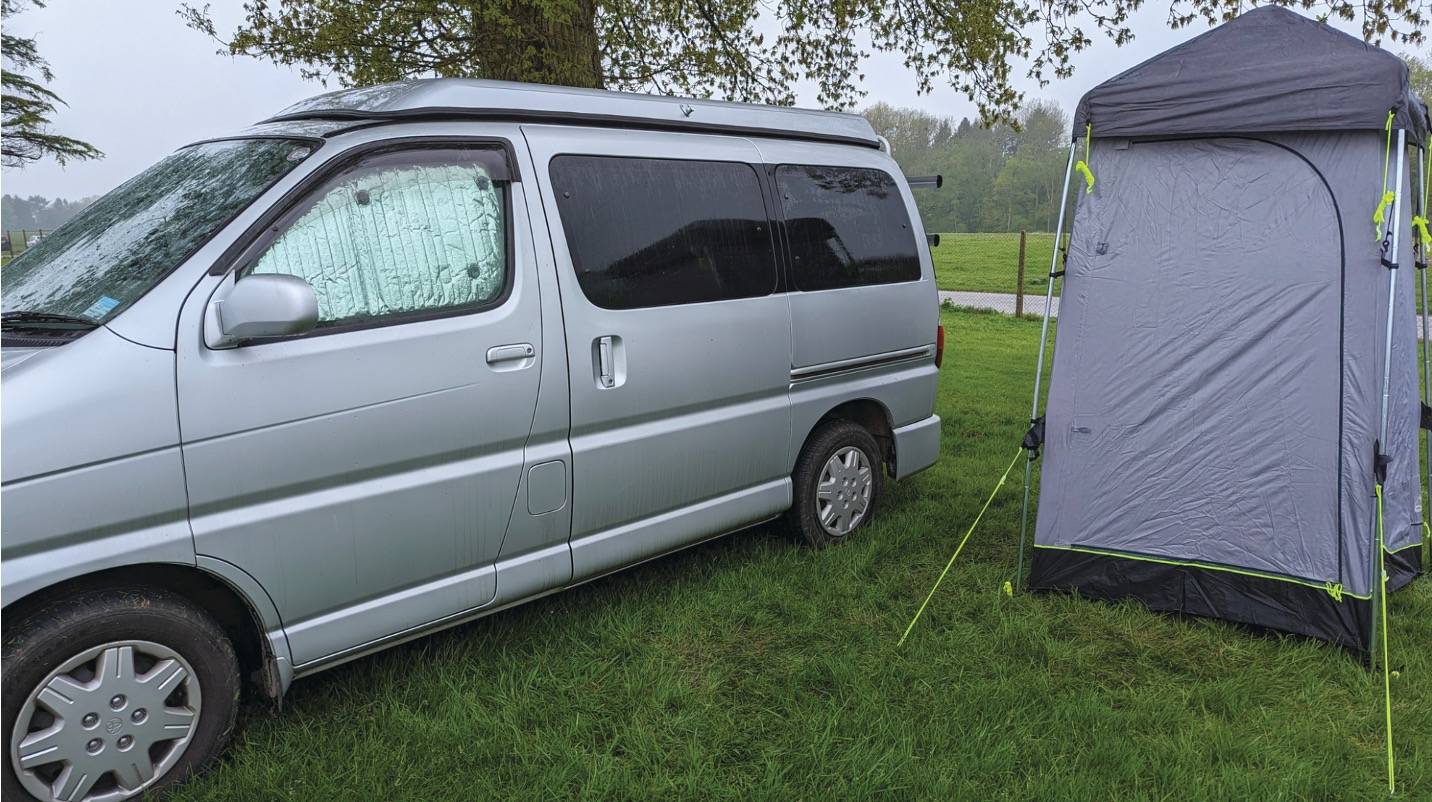Camping toilets: a complete guide
If you are wild camping, camping off-grid or the campsite you book onto doesn’t have toilet facilities, you will need to consider alternative arrangements
While motorhomers and caravanners are used to having their own toilets on board, most tent campers tend to rely on the campsite facilities. So, if you are planning a family holiday on a site where the amenities are limited, you'll need to think about buying a portable camping toilet
Page contents
- Types of camping toilets
- Camping toilet chemicals
- Emptying a camping toilet
- Cleaning a camping toilet
- Camping toilet tents
- FAQ
- About our magazines
Words by Iain Duff
Types of camping toilets
Camping toilets can literally range from a hole in the ground to a fully flushing toilet. The best camping toilet for you will depend on various factors, including budget, length of trips and how many campers will be using it.
Bucket camping toilet
If you’re wild camping, all you need is a mini shovel and some toilet roll. But if you are camping on a site your first option to consider is a basic ‘bucket’ type model. The most basic approach is a bucket with some cat litter inside to absorb the smell.
This is perhaps best suited as an emergency-only option, with a strict ‘no solids’ rule, as it will need regular emptying. Another alternative is the Bog-in-a-Bag, which is lightweight and disposable and a good choice for festivals.
Non-flushing camping toilet
The next level up is a simple, non-flushing, portable toilet, like the Kampa Khazi (and the larger King Khazi), the Big Loo from Outdoor Revolution and Outwell’s 7L portable toilet. Here we have the portable toilet at its most basic – essentially a bucket with a seat and lid. These are relatively lightweight and compact, so are easier to transport in the car than the bulkier flushing models.
They are also more affordable, usually coming in at under £20. Prime with some water and toilet fluid and then you can start using it. These can be unstable and emptying the heavy bucket down the toilet can be tricky, too, but they are popular.
Flushing camping toilet

(Photo courtesy of Thetford)
For longer trips, flushing portable toilets offer more in the way of comfort and convenience. The best known is probably the Porta Potti range from Thetford, but other manufacturers produce their own, including Outwell’s Portable Toilet.
Although they tend to be quite bulky, they are far more stable than the bucket-style, so there is less chance of accidents. And the biggest plus with a flushing loo is that there should be no nasty smells. These toilets have a manual flush and detachable tank for emptying, and are used with special chemicals that break down the waste and mask the smell.
Greener options
The eco-friendly Blue Diamond Nature Calls toilet was the first portable composting toilet. The separation of liquids and solids makes disposal of waste more environmentally sound, removing the need for water or chemicals. Coffee chaff or sawdust (supplied separately) dries out the solid waste and masks the smell. Solids can be added to any compost heap whereas liquids can just go straight down the drain.
Another environmentally friendly option is the WandaGO, from German company, Trobolo, which uses a composting system.
Because there are no chemicals involved, getting rid of the waste is easy, with no need to use a chemical disposal point. Solid waste can go in any regular rubbish bin, just like used nappies, and liquid waste can be poured down any toilet or diluted with water and used as a natural fertiliser.
The Popaloo uses a dry powder waste gelling system and biodegradable bags. The toilet itself folds flat into a carry case so it is easy to transport.
Camping toilet chemicals

(Photo courtesy of Thetford)
For a normal flushing portable toilet, you’ll need two liquid chemicals. The first (pink) is a cleaner that goes into the flushing tank. It cleans the bowl when you flush and also protects against dirt marks and water deposits. If you are using a non-flushing toilet you obviously don’t need the pink liquid.
The second (blue) goes into the waste tank to break down solids and prevent odours. There is a green alternative to the blue liquid, which uses more natural methods to break down the waste. Some campsites will only accept this type of product, so make sure you check in advance or take both.
Toilet chemicals are available widely from camping and outdoor shops. Thetford provides an extensive range of pink, blue and green products, including sachets, which are a convenient alternative to bulky bottles of liquid. Kampa has also launched a range of eco-friendly toilet liquid, which comes in the more pleasant fragrances of spearmint, pomegranate and pine.
Emptying a camping toilet
The majority of campsites – especially those that accept motorhomes and caravans – have chemical waste disposal points. These are the only place you should get rid of toilet waste. Never pour it down the general water disposal drains and definitely keep it well clear of fresh water.
The tanks in flushable toilets can get quite heavy, so it’s advisable to empty them every day. Stick on a pair of gloves, carefully remove the cassette from the toilet unit and carry it to the disposal area. Empty the tank, flush away the contents, then rinse it out using the hose provided. Back at the tent, make sure you fill it with chemicals again.
Cleaning a camping toilet
It’s recommended that you give your portable camping toilet a clean down every few days while it’s in use and give it a thorough clean after every trip.
Proper cleaning is crucial for hygiene and keeping the toilet in good working condition. Keep the inside of the bowl clean with specially made cleaning products that are safe to use on plastics. The exterior surfaces can be wiped down with hot water or cleaning wipes. At home, make sure the interior of the toilet is completely clean by taking it outside and hosing it down. There are various products available for cleaning the cassette or you could try the DIY option by using white vinegar.
Use silicone spray on the seals to prevent the rubber from drying out and breaking down.
Camping toilet tents

(Photo by Iain Duff)
If your tent has an enclosed side porch then that’s the perfect place to create a makeshift camping WC, especially if it has a zip door sealing it off from the main body of the tent. A spare bedroom in a large family tent is another option. If your tent is smaller or has a large single living/sleeping area (like a bell tent or a tipi) then you might have to be creative with your set-up to provide some privacy. Fashion a privacy screen using a blanket or a throw draped over some furniture, perhaps.
The simple solution is to buy a stand-alone, pop-up toilet tent. Olpro, Kampa, Outwell and Quechua are among the brands that produce these simple tents, which can be used both as a toilet and a shower cubicle. Some campsites don’t allow them so check in advance, but most should be sympathetic.
FAQ
Can I use regular toilet paper?
You can use regular loo roll in your flushing camping toilet, but you should keep its use to a minimum. Wet toilet paper can form clumps and clog up the tank, making it difficult to empty and clean. It’s far better to use specially designed, fast-dissolving toilet paper such as Thetford’s Aqua Soft. Don’t put any other waste into the toilet, such as nappies, wipes and sanitary items.
What size of tank do I need?
If you decide on a flushing toilet, you’ll need to consider what size of waste tank you need. For a small family a 10-litre tank will probably suffice, but for bigger groups a 20-litre capacity is recommended.
Can you poop in a camping toilet?
The short answer is yes, you can. However, it’s recommended that if you have a bucket-style or non-flushing camping toilet, then there should be a liquids-only rule. In a flushing toilet, chemicals break down the waste and mask the smell so these are better suited for solid waste.
Expert Camping advice!

Camping magazine has been the voice of campers for over 60 years!
Camping is the UK's only magazine devoted to the wonderful world of life under canvas and the freedom it brings.
Every issue is packed with inspirational travel, the top camping sites to stay on, reviews of the latest tents, camping gear reviews, practical help and much more to help you get the most out of your camping adventures.
Want to know more about Camping magazine?
About Camping magazine








Recent Updates
Camping barbecue: our guide to cooking up a storm this summer
Is there anything more British than sausages grilled on an open flame and dropped on wet grass? Camping and barbecues go hand in hand, which is why ...
Our family camping checklist: everything you need to pack
Sure, you’ve packed the tent and the sleeping bags – but what about slip-on shoes and glow sticks? These are ...
Our guide to planning the perfect camping road trip
Roll down the window, pop on those shades and crank up the volume – it’s time for a road trip. Get ready for ...
Camping in Europe: our 12 top tips
If you’ve not camped in Europe before, there’s a few tips and tricks you’ll need to avoid some continental ...
Solar power for camping: all you need to know
Staying connected in the great outdoors is easier than ever with a solar charger – or is it? How reliable are ...
Wild camping kit list: everything you need for your next adventure
Make sure you’re ready for anything with this list of lightweight camping gear and clothing, including ...
Camping furniture: all you need to know to make your tent a cosy haven
We delve into the essentials of camping chairs, camping tables, and kitchen and bedroom furniture, ensuring ...
Camping lights for tents: What you need to know
We will guide you through all the lighting options available for you and your tent, including interior ...
Camping kitchen: all you need to know
In the great outdoors, a well-equipped camping kitchen transforms mealtime into a delightful adventure ...
How to pack away your camping gear for winter
A complete guide to packing and storing your gear at the end of the season ...
Other Articles
Camping guide to trailers
Trailer stash or trailer trash? Being able to carry lots of other gear when you go camping isn’t such a bad idea, is it? Nick Harding looks at the ...
Winter camping: all you need to know to keep warm
Winter doesn’t have to mean the end of the camping season. With good preparation and the right gear, there’s ...
Top tips for camping in windy weather
How to make sure your tent stands up to gusty conditions ...
Camping tents: a complete guide
If you're considering buying a camping tent, whether it's your first time or you're a seasoned camper, making ...
Camping sleeping bags and beds: a complete guide
When it comes to camping, there's one essential item that can make or break your outdoor adventure: the ...
Camping gas: how to use gas on the campsite
A complete guide to using camping gas appliances safely on the campsite, from choosing the right stove to ...
Camping storage: a complete guide
Having problems knowing where to put all your gear when you're camping? Read our top tips and see some great ...
Camping electric hook-up: a complete guide
This is everything you need to know about using electricity on a campsite, including how to hook up ...
How to pack all your camping gear into your car
Planning a family camping holiday? Find out the best way to fit all the kit you need into your car boot, roof ...
Camping stoves and cookers: the complete guide
Camping stoves are an essential part of any outdoor adventure, allowing you to prepare meals and hot drinks ...